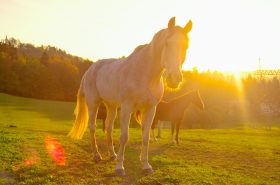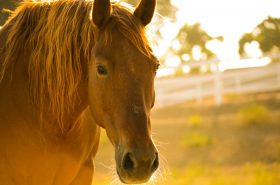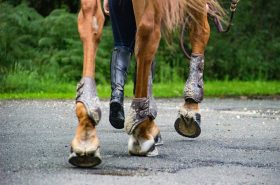Winter brings a unique set of challenges to horse owners, with snow, ice, and mud creating potentially hazardous conditions around the barn and paddocks.
Effective management is crucial to ensure the safety and well-being of your horses, and yourself, during these colder months. Here are five tips to help you navigate the winter season and keep your barn area safe, accessible, and comfortable for you and your equine companions.
- Snow and Ice Removal
Keeping pathways, gates, and doorways clear of snow and ice is essential to maintain safe access to and from the barn. Regularly shovel or plow snow away from these areas, and apply pet-safe ice melt products to reduce the risk of slips and falls for both horses and humans. Be vigilant about roof snow as well; accumulating snow can present a risk of collapsing structures or creating sudden, frightening avalanches that could spook or injure your horses. One of my favorite hacks it to use my manure fork or the rake on the back of my tractor, to break up the snow in paddocks, runs, and arena making the snow melt much faster.
- Improve Traction
In areas where ice is a problem, improving traction can prevent dangerous slips. And shoveling isn’t always ideal. Use sand, small gravel, or specialized non-toxic, horse-safe traction agents around the barn entrance, walkways, and in paddocks where ice tends to form. Be mindful of the materials you choose, as some can be harmful to horses’ hooves or may lead to environmental issues.
- Manage Mud Effectively
Mud can be a significant problem as temperatures fluctuate, leading to messy conditions that are not only a nuisance but can also harbor bacteria and cause hoof problems. Identify the areas that are most prone to mud, typically gateways, feeding areas, water trough locations, and frequently used pathways. These high-traffic zones are where you should concentrate your mud management efforts. Consider laying down geotextile fabrics and covering them with gravel or sand in high-traffic areas to reduce mud. Regularly removing organic debris, like fallen leaves and manure, which contribute to mud, will also help keep the area cleaner and drier.
- Protective Footing and Bedding
Inside the barn, ensure that your horses have dry, clean, and warm bedding to rest on. This is particularly important in winter when horses are more likely to spend extended periods indoors. Outside, consider using mats or specialized footing products such as sand for horses to lay on without having to lay in the mud. This can also aid in the prevention of hock sores, as well as prevent the ground from becoming too icy or muddy and can provide extra insulation from the cold ground.
- Regular Health Checks and Hoof Care
Winter conditions can exacerbate health issues, such as thrush and other hoof problems caused by standing in wet or muddy conditions. Regular hoof cleaning and care are vital, along with daily health checks to spot any signs of discomfort or illness early. Pay particular attention to the condition of your horses’ coats, skin, and hooves during the winter months. Ensure they are groomed regularly to remove mud and moisture, which can lead to skin irritations such as fungus, and other health issues.
By implementing these strategies, you can significantly reduce the risks and inconveniences posed by snow, ice, and mud around your horse barn. Remember, the key to successful winter management is preparation and regular maintenance. By staying proactive, you can provide a safe, comfortable, and healthy environment for your horses throughout the winter season.



